The origin of the American golfer's fascination with Irish links is widely attributed to the eloquent waxing Tom Watson, who, after winning the Open Championship at Scotland's Royal Troon in 1982, for some reason had this to say of Ballybunion Golf Club in County Kerry, Ireland:
"Nobody can call himself a golfer unless he has played at Ballybunion. You would think the game originated there."
Who knows how many Dallas bankers and Atlanta orthopedists felt moved by Watson's comments and booked themselves a buddy pilgrimage to Ireland's mighty Southwest, but for years Tourism Ireland said unofficially that some 75 percent of all foreign golf travel to Ireland went to the Southwest.
They were not disappointed.
Ballybunion was my first stop back in the mid-90s on the first of many journeys to Ireland. I had been so careful to plan my flight arrival into Shannon at midday because I thought my first attempt to drive on the left on their cartpath country roads should be done in broad daylight. A delay out of Chicago put me there at dusk in July, so I made my gut-clenching rental car voyage in the dark, timidly hugging the whisker-thin shoulders of the wee roads and dreading my first roundabout.

Soon I figured out that being nearly alone on the backroads gave me more room for error. Within minutes, I was breathing in the moist sea breeze and zipping through the roundabouts like an O'Farrell. I found my modest B&B just 50 yards off the Ballybunion Old Course's fifth fairway, and thus began the Irish love affair I've renewed almost every summer since.
As tourist brochuresque as it may sound, you cannot go wrong golf-wise spending your vacation in any of Ireland's golf regions -- Dublin and The East Coast, the Southwest, the Northwest and, certainly, the entirely separate country of Northern Ireland, with invigorating Belfast and the mighty world top-tens, Royal Portrush and Royal County Down.
But let's bite off the Southwest first.
If you drive down from Dublin, leaping over some exceptional golf at The European Club, Portmarnock Old, Baltray and The Island, the logical start for your Southwest sojourn would be Waterville Golf Links, one of dozens of Irish courses first brought to life by the designer laureate of Irish golf architecture, Eddie Hackett. (If you fly into Shannon, you can reverse this itinerary.)
Irish-American millionaire Jack Mulcahy put Hackett to work on some admirable links that had first seen 9-hole golf in 1902 and was mainly populated with transatlantic cable workers until its dormancy in the 50s. In 1973, Hackett brought a coherent modern design to the landscape, and it would soon host the likes of Raymond Floyd, Gary Player, Ken Venturi and Watson, and even Hollywood hackers like Bob Hope and Jack Lemmon.
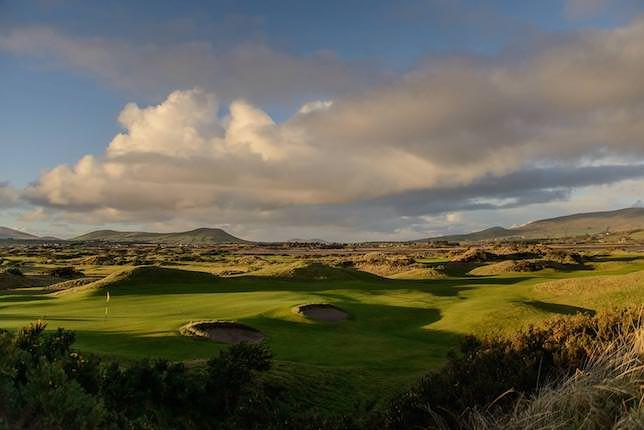
Hackett was never a big excavator due to the depressed wages of his era, but when given an adequate budget he saw the exceptional potential that could be carved out in Waterville. Mulcahy was so smitten with Hackett's work that he had the tee on the par-three 17th raised to the heavens so that the multitudes could see the artistry of the place, and later decreed that his ashes should be buried there, according to Irish golf journalist and architect, Pat Ruddy.
In 2006, American golf course designer Tom Fazio was hired to expand Waterville into a world-class venue, and soon Tiger Woods and Mark O'Meara were stopping by when they came to Ireland to hook salmon.
There's no denying the challenge at Waterville, which can be taken on at 7,400 yards, but because the town is so tiny and remote, the crowds seem to be more heavily drawn from the American tour buses than the Irish countryside. No crime in that, and the course is theatrical championship golf, but there are fuller Irish experiences to be found along the way.
On the southern side of Dingle Bay in the engaging village of Glenbeigh, Dooks Golf Club gets wrongfully overlooked by some bag-tag hunting golfers who still think the length of the course equates to its quality or challenge. Dooks is about 6,600 yards now after a redesign by Martin Hawtree and Marc Westenborg more than a decade ago, and while some of the homemade eccentricities of the old layout may be history, the needed reconstruction of 16 of 18 greens, with new bunkers, new contours and a vastly more open feel due to tree removal has been entirely for the good.
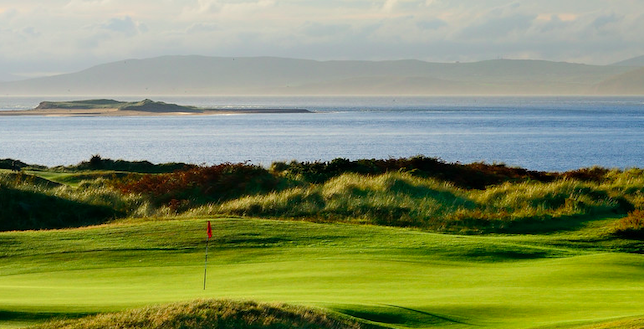
Dooks has an endearing egalitarian club history. In 1921, write Richard Phinney and Scott Whitley in their seminal Irish golf travel guide, "Links of Heaven," the captain of the club was a woman, still a rarity in the golf world. Their environmental stewardship was shaped by the discovery in 1981 that some refurbishing would drain the vital breeding ground of the local Natterjack toad. Instead of fighting environmentalists, the club built new breeding sites for the toad and soon embraced it as their official mascot.
The loyalty of the club members must certainly stem from events in 1965 when they rescued the club by raising 7,000 Irish pounds to buy the course from its owner. What they saved was just a nine-holer back then, the remnants of a course first laid out in 1886, making Dooks one of the oldest golf grounds in Ireland. The industrious members scraped together more funds to extend the course, and by 1970 a full 18 made its debut.
Always delightfully quirky -- ask someone about The Saucer green from the old 13th -- and perhaps unrivaled in sheer coastal beauty, the Hawtree redesign transformed Dooks into a championship venue -- at least for mortals -- without leaving the feel that its inherent hometown charm had been homogenized by an architect's paint-by-numbers strategy. Few courses in Ireland have this combination, hole after hole, of mountains, countryside and sea.
In a country full of genuine golf towns, where the pubs and hotels might dry up were it not for the commerce driven by their glorious links, you'd be pushed to find a more dedicated and alluring spot than Ballybunion.
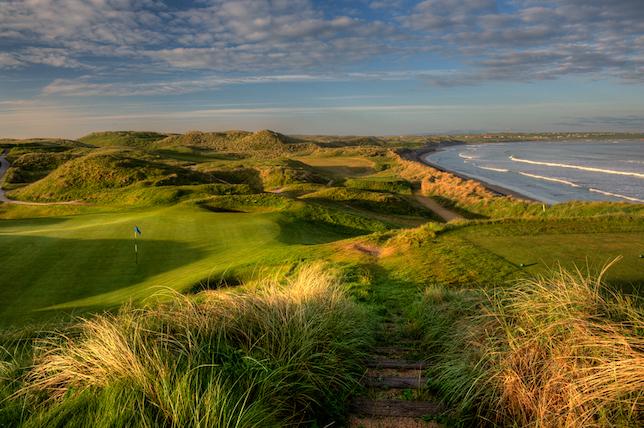
The long coastal walk that unveils the town's enormous beach naturally takes a visitor to the famous course that has for decades belonged on most everyone's world top-ten rankings. There's a welcoming club there and perhaps the best restaurant in a town that has barely 1,800 full-time residents. (Summer can swell that number threefold.) Golf-themed bookstores and souvenir shops can hold your attention for a while, and the surfing crowd is loyal, but there's really nothing better to do than just hang at Ballybunion Old and its lesser companion, the Cashen course, and soak up the golf experience that brought Tom Watson and legions of American tourists.
Seve Ballesteros, who seemed born to play links golf, once said of Ballybunion: "It demands greater imagination and shot-making skills than anything I have ever known. It makes me feel the same way as when I first saw St. Andrews (site of his British Open victory in 1984). The magic is the same."
The exquisite American golf writer, Herbert Warren Wind, wrote in The New Yorker in 1971, "Ballybunion revealed itself to be nothing less than the finest seaside course I have ever seen."
It wasn't so much magic as wobbly-kneed fear that I was feeling on my first tee shot there in the 1990s before I yanked a screaming hook maybe 70 yards into a grassy dune that could have hidden a dozen sheep. This is old advice, but I always think it's smart to show up very early to such golf cathedrals and just take photos, talk to strangers or walk the dunes until all that Sean Connery gravitas fades a bit and you can just play some relaxed golf. The caddies have all seen shots worse than yours or mine.
So, why is Ballybunion special?
Of course, some of it is just the clubhouse mystique, the walls of photos of Hall of Fame golfers, and the testimonials of former president Bill Clinton, who the town paid tribute to with a statue in the middle of the village.

The scenic drama certainly amps up your nerves. The mountainous tee boxes are so distracting for first-timers that you feel torn between your camera or your golf clubs. You soak that in and then see the 80-foot dunes, the relentless challenge and punishment that awaits, and who doesn't think it would be sacrilegious to play one's normal hacker round.
There's nothing simple here. A quick fly-over might make you think the holes just run up and back, parallel to the ocean, but many are angled from the beach, with broad regions tucked into amphitheaters of marram grass that often shield you from the wind or funnel it directly into your soul. (Next door at the Cashen this feel of solitude is even more profound, and in the occasional wicked storms your best protection may be to burrow into a dune.) Unlike many links courses, Ballybunion is not about a casual game of bumping your ball along the firm fairways. Much of your day demands pure target golf -- a compressed ball that bores through gales -- with very little room for error.
That's not to scare off the 20-handicapper, but only to warn that sometimes your very best shot is simply one that you can find. Learn to love your unexciting five-iron.
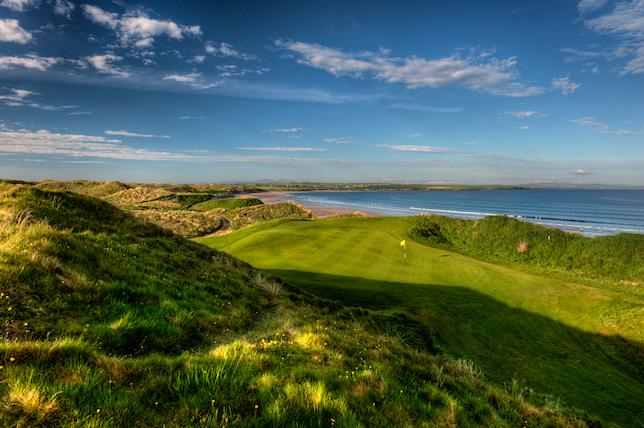
We don't put much stock here in the detailed descriptions of each hole, no matter how magisterial, because it's not likely you'll be clipping this out and tucking it into your waterproofs, but you'll like the first hole at Ballybunion, where you almost send your drive over a cemetery (and slicers do), and then certainly the 451-yard 11th -- Watson called it "the best par four in the world," -- whose grandeur and strategic challenge make it symbolic of this brilliant place.
Do not sell short the Cashen course, Robert Trent Jones Sr.'s only links course. If for some reason the Old Course at Ballybunion is locked up for the day, happily take on the Cashen, but know that it may be one of the toughest walks in Irish golf. Its views may be even more spectacular than the old starlet's, but the greens complexes, if you can believe it, might be even smaller and less forgiving.
Set aside some time to enjoy the 15th and 16th at the Cashen, among the most photogenic back-to-back holes in all the world. Without question, if the Cashen were all alone in this delightful village touring golfers would have still made it a golf destination.
Little more than a 30-minute drive from Ballybunion is lovely Tralee Golf Club, about eight miles out of town on some seaside links the members call Barrow.
A confession of sorts is needed here. Due to squalls and poor planning, I had somehow missed playing Tralee until last summer, which is a bit like saying I went to Austin for vacation and didn't have barbecue.
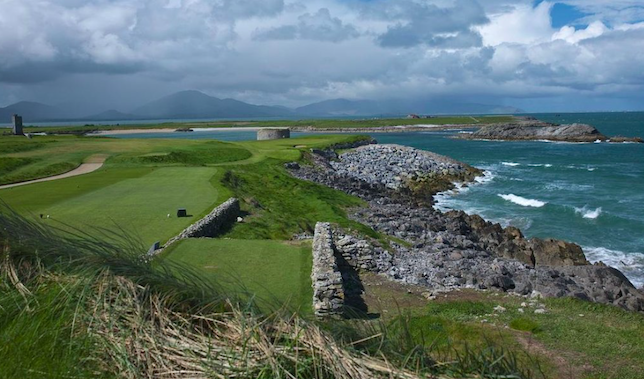
Tralee doesn't have the ancestral pedigree of its neighbors -- Arnold Palmer's estimable partner Ed Seay did the design in the early 1980s -- but I doubt anyone could figure that out from walking this enticing and grand landscape.
One could say of most links courses that they are big open canvasses between the seashore and the interior fertile farmland, but on some courses the actual design takes you deep into canyons between giant dunes where you feel like you're the only golfers on the planet. I like that solitude, but I also like the opposite effect, that Kingdom of Golf feel you get at Tralee by seeing your compatriots on adjoining holes and the distant vistas of demanding golf to come.
Consequently, you'll be using your woods here. Unleash thyself.
By the third hole on even a routinely windy day you might think you should have packed a tent and some provisions. It's really rugged golf along the edge of the ocean cliffs, so do what you can to stay in the fairway, and just overlook that this is splendid advice for your entire trip.
Alas, the back nine is even tougher. There's a moment at the 11th where you'll likely be aiming for a cloud. A low stone wall confronts your second shot. And so it goes – perfect links golf with sight lines and features and ocean grandeur those busloads of Atlantans have never seen.
You've wisely saved Lahinch for last.
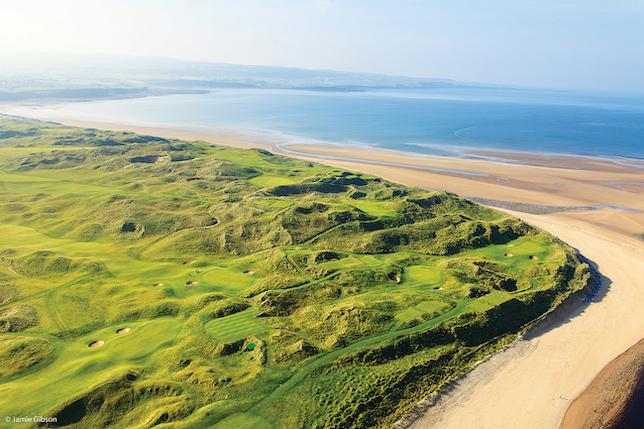
Course rankings and comparisons can get silly -- the friendships and fun are what most of us want to measure -- but Lahinch has been among the world's best 20 courses for decades and certainly shouldn't be missed if you're anywhere nearby.
Alister Mackenzie, of Augusta National and Cypress Point fame, did career-defining work at Lahinch in 1927 -- improving the original design by Old Tom Morris and a near-total redo by Charles Gibson in 1907 -- but by 1999 many of the greens had lost their subtle contours, and bunkers had lapsed into poorly-defined patches of sand. The now-esteemed golf course repairman and inspired architect, Martin Hawtree, was called upon to restore Lahinch to its awesome original intent. Hawtree told authors Phinney and Whitley that it took him four years and 80 or 90 visits to fully refine the course.
The new Lahinch is invigorating, yet fully respectful of Mackenzie's vision. Imagining that golf tournaments on these links have been a very big thing that excited local newspapers for well over a century should humble us all.
Lahinch has a vibrant history, including flag-raising skirmishes in 1920 at the clubhouse between British soldiers and Irish nationalists, and the thrill of having one of its members, Dr. P.J. Hillery, serve as the president of Ireland for 14 years. Today, not unlike St. Andrews, Lahinch is tucked beside the town and the beach, so you can stroll through the bookstores and the slightly California-toned surf-centric gear shops before walking to your round.
At Lahinch it is worth talking about two holes just because you may never see anything like them on the planet.
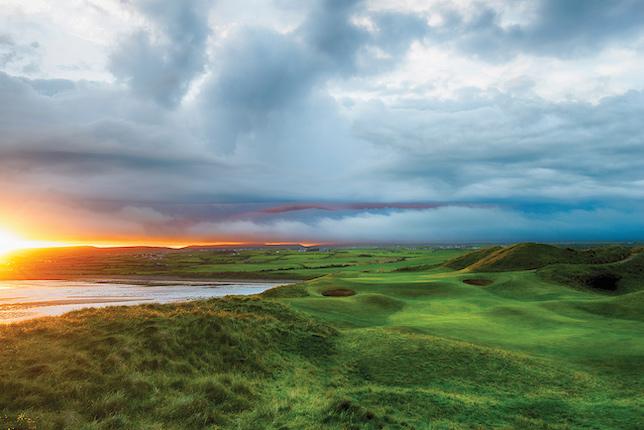
The fourth hole, the 475-yard par-5 Klondyke, offers you a lovely little valley for your tee shot, and then, had you not been prepared you would think someone's playing a joke. They've put a small mountain in the middle of my fairway and there's no sign of a flag or a dogleg. But there is a sentry atop that hill, an actual person, who tells you when the green beyond the grassy hill has cleared. It's fabulous Old Tom Morris golf that would never be built today.
And then, as if to prove that the Klondyke wasn't due to late-night drunkenness or spite, the fifth, the 154-yard Dell, presents itself as a totally-blind par-three over yet another grassy dune, whose flag position is known only by a white stone on the hill at which you aim. Locals like to say aim left of the stone and that the hole easily plays 175 yards on a normal day. The green is tiny and intimate, like a shelter some golf baron might build on a farm for children, but it's a delight if you're not totally consumed by architectural decorum.
What endears Lahinch to so many golfers is the glorious diversity of the holes. A total newbie to the course will likely remember back at the pub a dozen holes with real clarity, a distinction some of the game's mighty sanctuaries can't rightfully claim. Hawtree's 6th, 7th and 8th holes are as fun and challenging as any links golf built in the past 20 years.
If you like to watch as much as play, there'd be no better time to see Lahinch than at this year's Irish Open, July 4-7, two weeks before the British Open at Northern Ireland's Royal Portrush.
This journey can be easily done in a week, but if you take two you can explore more beaches, find more country house restaurants and discover some of the outstanding parkland courses in the Southwest as well as outstanding links at Kilkee, Castlegregory, Ceann Sibeal and Spanish Point.
Related: Waterproof Shoes Are A Must For Golfing In Ireland
-- Bruce Selcraig is a former staff writer with Sports Illustrated whose work has appeared in The New York Times Magazine, Harper's and The Atlantic, among others. Contact him at selcraig@swbell.net.





